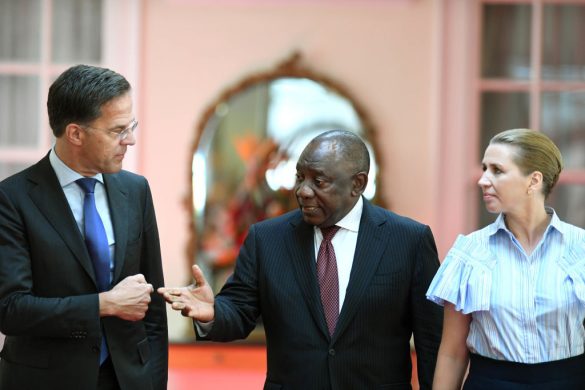Afrika har også “sit Nordkorea” – Eritrea: 300.000 er flygtet fra Rødehavs-landet ifølge FN, og nu siger menneskeretsvagthund, at tusinder er havnet i torturlejre i Sinai-ørkenen, hvor menneskehandlere afpresser deres familier store løsesummer, mens myndighederne intet foretager sig.
JOHANNESBURG, 12 February 2014 (IRIN): Since 2009, hundreds and possibly thousands of refugees, most of them Eritrean, have been kidnapped in eastern Sudan and sold to traffickers (menneskehandlere) in Egypt’s Sinai Peninsula, where they are held and tortured until their relatives can raise tens of thousands of dollars in ransom money.
According to a report released on 11 February by Human Rights Watch (HRW), security forces in Sudan and Egypt have either turned a blind eye to this violent trade in men, women and children or, in some cases, colluded (samarbejdet) with the traffickers.
The 79-page report documents the kidnapping and torture of victims, and describes how Sudanese and Egyptian security officers facilitated abductions by traffickers, or failed to take action against them.
HRW alleges that at Sudan’s eastern border with Eritrea, near the town of Kassala, police and border guards regularly intercept (tilbageholder) Eritrean refugees and hand them over to traffickers, while security officials allow traffickers and their victims to pass through checkpoints between Sudan and Egypt’s Suez Canal.
“When the authorities fail to tackle traffickers or help them, it is not just a criminal law enforcement issue, it becomes a human rights issue,” Gerry Simpson, a senior refugee researcher at Human Rights Watch and the report’s author, told IRIN,adding:
“The Sudanese and Egyptian states have been wilfully turning a blind eye to massive criminal activity at best and at worst are actively supporting some of it.”
Smugglers become traffickers
The UN Refugee Agency (UNHCR) says 300.000 Eritreans had sought asylum outside their country by the beginning of 2013.
The majority left after 2004, fleeing widespread human rights abuses (overgreb), including mandatory (obligatorisk) and indefinite military service (uden tidsbegrænsning), arbitrary (vilkårlig) arrest and detention, and severe restrictions on freedom of expression and movement.
Most leave without the exit permits required by Eritrean law, risking severe punishment if they are caught.
In the last decade, tens of thousands have registered as refugees at camps in eastern Sudan and Ethiopia, but most have quickly moved on in search of better conditions and opportunities.
Between 2006 and 2012, many hired smugglers to help them reach Israel via Egypt’s Sinai Peninsula.
Around 2009, reports began to surface of smugglers turning on their clients during the journey through Sinai, and holding them in torture camps while they extorted (afpressede) increasingly large sums of money from desperate relatives.
By the end of 2010, Sudanese traffickers were kidnapping Eritreans in or near eastern Sudan’s refugee camps and selling them to Egyptian traffickers operating in Sinai. Most victims said they never intended to go to Egypt or Israel.
A report published in December 2013 by three human rights activists and researchers estimated that between 2009 and 2013, as many as 30.000 people were victims of trafficking and torture in the Sinai Peninsula, and that between 5.000 and 10,000 of them did not survive their ordeal.
Yonathan Habte (not his name), 28, is among those who survived.
He left Eritrea in March 2012 and was kidnapped from Shagarab refugee camp near Kassala a few weeks later. He had been warned about the threat of kidnappers in eastern Sudan but thought he would be safe in the camp.
In fact, by 2012 UNHCR was recording about 30 kidnappings a week in and around eastern Sudan’s refugee camps.
Kidnapping ordeal
Læs videre på
http://www.irinnews.org/report/99632/sudan-and-egypt-implicated-in-human-trafficking














